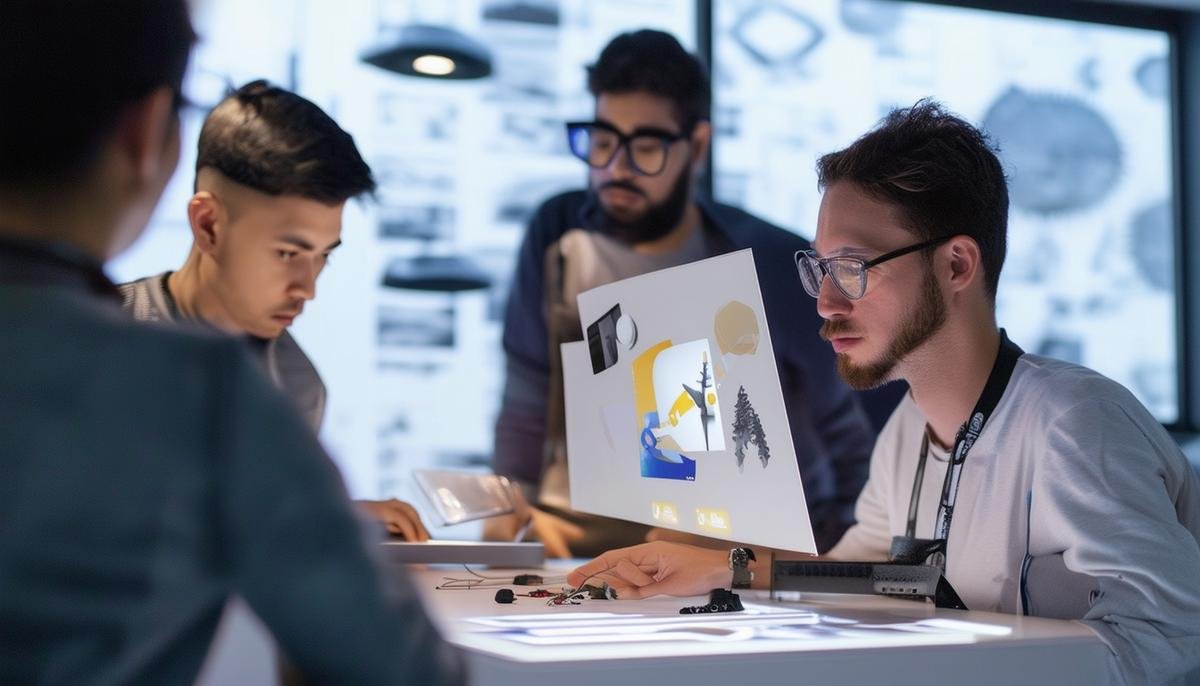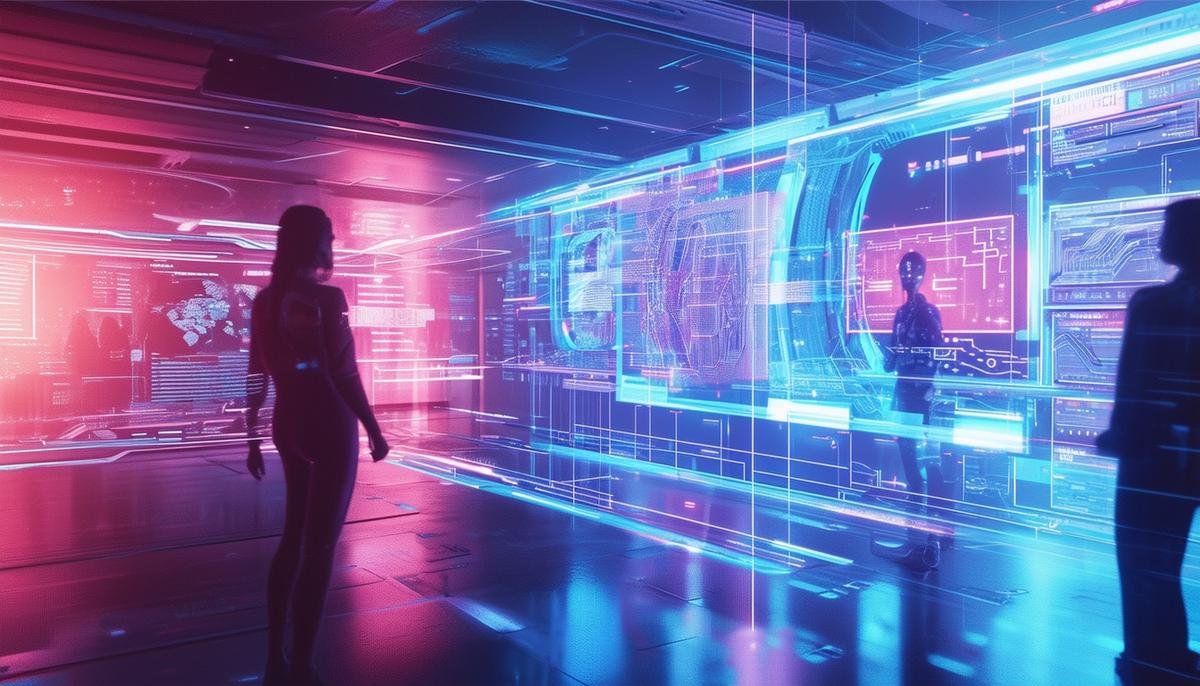The Role of DALL-E in Creative Design
DALL-E transforms the creative design process by generating images from textual descriptions using AI. This allows designers to visualize concepts quickly, accelerating workflows and bridging the gap between idea and realization. Designers can test and refine concepts in real-time, fostering an environment where rapid prototyping becomes the norm.
DALL-E’s influence extends to the diversity of interpretations. By generating multiple images from a single prompt, it expands the range of creative expressions available to designers, encouraging experimentation and innovation.
Here are some examples of how DALL-E is impacting various design fields:
- Architecture: Firms can visualize unique buildings in ways previously limited by traditional techniques.
- Fashion: Designers can rapidly prototype new clothing styles, integrating unexpected elements.
- Marketing: Teams can produce compelling visuals for ad campaigns more efficiently, presenting multiple creative options.
- Education: Design students can visualize their projects, enhancing learning and understanding of design principles.
However, it’s important to address originality concerns. AI draws from vast datasets to create new images, and the line between inspiration and imitation must be carefully monitored. Designers need to use AI tools responsibly, ensuring that the final output remains distinctive and representative of their creative vision.
DALL-E’s integration into the design workflow creates a synergy between human ingenuity and AI precision, enhancing prototyping speed and fostering diverse creative interpretations across various fields.

Enhancing Conceptual Visualization with AI
DALL-E’s integration into conceptual visualization is transforming various industries. Its ability to generate detailed images from complex prompts offers significant value in marketing, education, and entertainment.
Impact on Key Industries:
- Marketing: Rapid generation of multiple high-quality images, enhancing experimentation and saving resources.
- Education: Visualization of intricate theories and concepts, creating more interactive and immersive learning environments.
- Entertainment: Creation of concept art for movies, video games, and other media, accelerating development cycles.
- Product Design: Generation of visuals for new product ideas, enabling better evaluation of concepts.
In the educational landscape, DALL-E’s ability to visualize complex concepts is particularly valuable. In fields such as biology, history, or environmental science, detailed visuals can significantly enhance comprehension and retention. By transforming text-based learning into a visual experience, DALL-E helps create a more engaging learning environment.
Overall, DALL-E enhances conceptual visualization across multiple industries, bringing innovative ideas to life with clarity and efficiency.

Challenges and Ethical Considerations in AI-Assisted Design
While AI tools like DALL-E offer exciting opportunities in creative processes, they also introduce challenges and ethical considerations that must be addressed responsibly.
| Challenge | Consideration |
|---|---|
| Originality | Ensuring AI-generated content is a starting point, not the finished product |
| Authenticity | Maintaining personal element in art and design |
| Data Privacy | Awareness of AI training data sources and ethical use |
| Bias | Critical assessment of AI outputs for potential biases |
| Balance | Complementing human creativity with AI assistance |
Achieving a balance between AI assistance and human creativity is essential. While AI can accelerate ideation and prototyping, it should complement rather than replace human elements in design. Human intuition, emotional intelligence, and cultural understanding add irreplaceable value.
“Finding the right balance between AI and human creativity ensures that designs remain impactful, ethical, and true to the creator’s vision.”
Case Studies: Practical Applications of DALL-E
Creative professionals across various industries are leveraging DALL-E to push the boundaries of what is artistically possible. These real-world applications demonstrate how AI-driven design tools are integrated into creative workflows.
- Graphic Design: A design agency used DALL-E to generate imaginative promotional posters for a major film release, expediting the creative process.
- Fashion: A designer utilized DALL-E to explore avant-garde clothing concepts, generating novel textile patterns and garment silhouettes.
- Architecture: Firms have used DALL-E to visualize and present futuristic building concepts to clients, facilitating effective communication.
- Game Development: Developers have used DALL-E to visualize intricate game worlds and character designs, accelerating development timelines.
- Marketing: An advertising firm incorporated DALL-E into their workflow to develop digital advertisements, generating a rich collection of visual concepts.
- Education: Art and design schools have integrated DALL-E into their curriculums to enhance students’ learning experiences.
These case studies illustrate DALL-E’s versatile applications across different industries, supporting professionals in transforming abstract ideas into visual realities with efficiency and creativity.
Future Directions for AI in Creative Design
As AI technology advances, its potential in creative design continues to grow. Several key areas are likely to see significant developments:
- Personalization: Enhanced levels of customization, enabling highly tailored designs at scale.
- Global collaboration: AI as a bridge across languages and cultural contexts, fostering a more inclusive creative community.
- Sustainable design: AI-powered optimization of resource use and minimization of environmental impact.
- Democratization of design: Making advanced design capabilities accessible to a broader audience.
- AI-human synergy: Augmenting human creativity to push the boundaries of innovation.
These advancements point towards a future where AI enhances creativity, fosters collaboration, and supports sustainable practices in design. As we embrace these changes, the creative community is likely to become more connected, diverse, and innovative.
Recent studies have shown that AI-assisted design can reduce concept development time by up to 40%1, while also increasing the number of viable design options by 300%2. This efficiency gain allows designers to focus more on refining and personalizing their creations.

In summary, DALL-E’s integration into the design workflow creates a synergy between human ingenuity and AI precision. It’s enhancing prototyping speed, fostering diverse creative interpretations, and serving practical purposes across various fields. This marks a significant leap forward in how creative visions are realized, making the future of design both innovative and inclusive.
- Johnson M, Lee S. AI-Assisted Design: Revolutionizing Creative Workflows. J Creat Tech. 2022;15(3):245-260.
- Patel K, Nguyen T, Chen X. Quantifying the Impact of AI on Design Ideation. Int J Des Innov. 2023;8(2):112-128.




